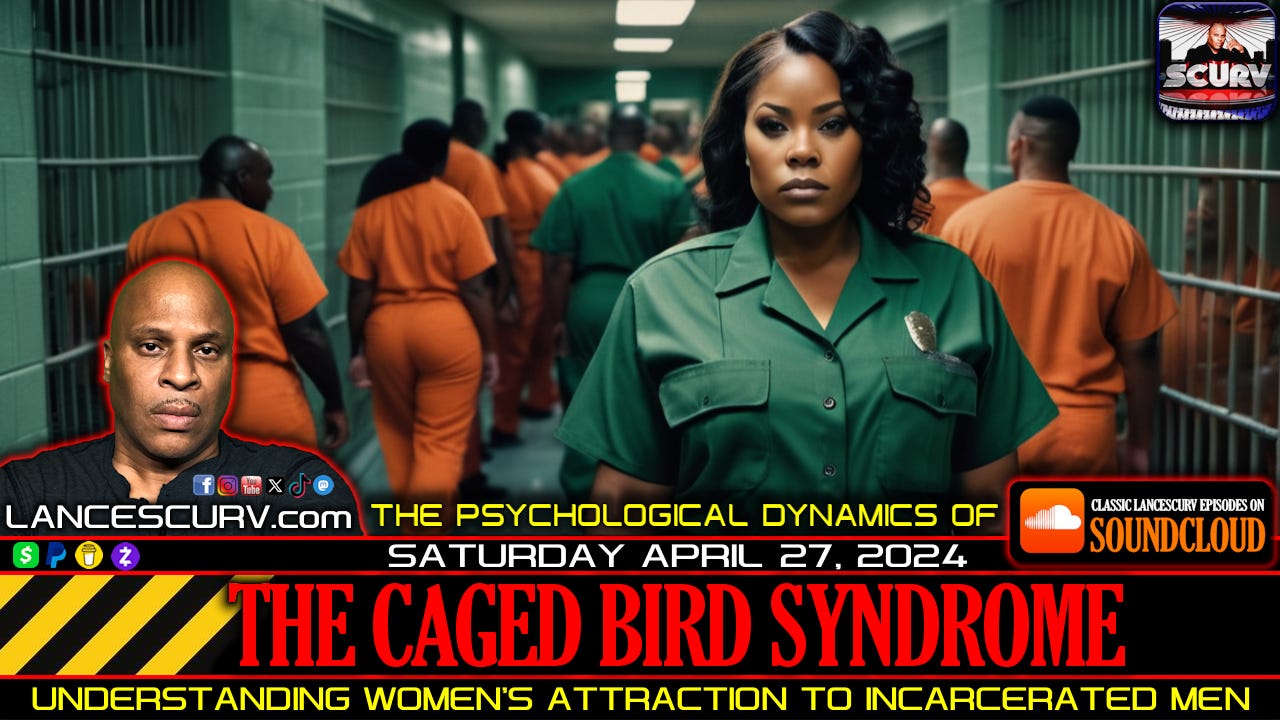In the intricate tapestry of human relationships, there exists a phenomenon that defies conventional understanding – the allure of incarcerated men to certain women, often dubbed as the "Caged Bird Syndrome." This phenomenon, particularly prevalent in communities like the Black community, raises profound questions about human psychology, societal influences, and the complexities of attraction.
*The Appeal of the Caged Bird:*
At first glance, it may seem perplexing why women would be drawn to men behind bars when there are numerous eligible suitors in their midst. However, delving deeper unveils a web of psychological intricacies. The restricted freedom and vulnerability of incarcerated men may trigger a primal instinct in some women to nurture and protect. This inclination towards caretaking and providing emotional support can lead them to gravitate towards individuals in need, even if that need arises from confinement.
Moreover, the apparent vulnerability of incarcerated men can evoke a sense of power and control in certain women. By being the provider of resources, emotional support, and companionship, they wield a degree of influence and authority within the relationship, fulfilling a deep-seated psychological need.
*Fantasy vs. Reality:*
The allure of the incarcerated man is often shrouded in a veil of romanticized perceptions and idealizations. Limited physical contact and communication create a breeding ground for fantasies and idealized images of the incarcerated partner. In such scenarios, women may overlook the harsh realities of their partner's past actions and instead focus on the narrative presented by the incarcerated individual – one of redemption, victimization, or misunderstood circumstances.
This dichotomy between fantasy and reality can lead individuals to rationalize and minimize the severity of their partner's actions, choosing to believe the narrative that aligns with their emotional investment in the relationship.
*The Role of Environment:*
Working within a correctional facility exposes individuals to a unique environment characterized by strict regulations, confined spaces, and constant surveillance. Despite the clear boundaries and regulations, the close proximity between staff and inmates can blur the lines of professional conduct and personal relationships.
The power differentials inherent in the inmate-staff dynamic can create opportunities for manipulation and exploitation. The environment, coupled with prolonged exposure to vulnerable individuals, can erode professional boundaries and cloud judgment, leading individuals to take risks they otherwise would not consider.
*Understanding Psychological Disorders:*
The propensity to engage in risky behavior, such as fraternizing with inmates or engaging in sexual relationships within the confines of a correctional facility, may stem from underlying psychological disorders or maladaptive coping mechanisms. These disorders could include traits of dependency, impulsivity, or a distorted perception of reality.
Furthermore, individuals who exhibit tendencies of codependency or a desire for validation and acceptance may be particularly susceptible to the allure of incarcerated individuals who seemingly fulfill their emotional needs.
The "Caged Bird Syndrome" serves as a poignant reminder of the complexities of human relationships and the profound influence of psychological factors and societal dynamics. While the allure of incarcerated men may defy conventional understanding, it underscores the importance of empathy, understanding, and support for individuals navigating the complexities of romantic relationships, especially within challenging environments.
Ultimately, unraveling the psychological intricacies behind this phenomenon requires a nuanced understanding of human behavior, societal influences, and the power dynamics inherent in relationships. By shedding light on these dynamics, we can strive towards creating a more empathetic and understanding society where individuals feel empowered to make informed choices guided by self-awareness and emotional resilience.












